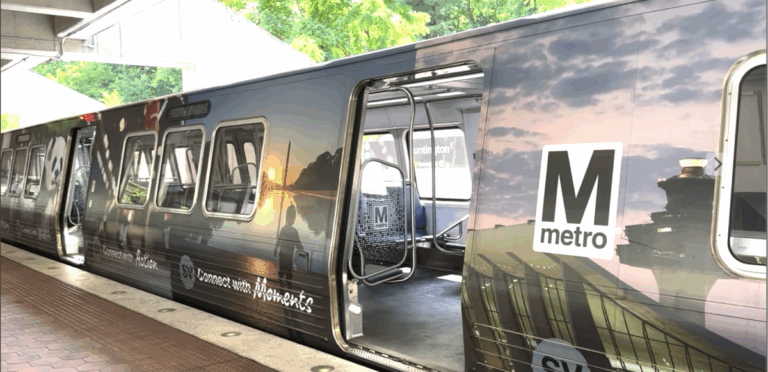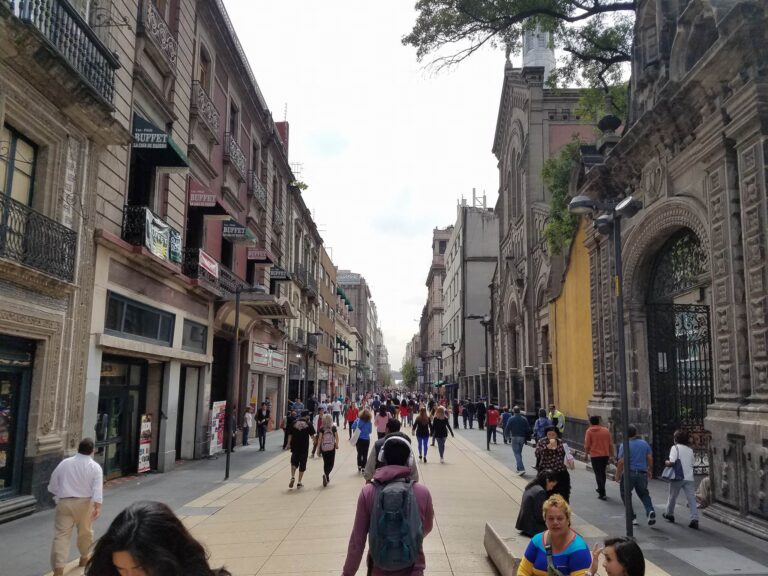Physical Address
304 North Cardinal St.
Dorchester Center, MA 02124
Physical Address
304 North Cardinal St.
Dorchester Center, MA 02124

Colleges are the perfect place for walkable neighborhoods, yet many colleges don’t focus on Transit Oriented Development. The Purple line going through the University of Maryland is a key expansion point for the D.C metro and will allow greater connections…

My guest this week is Anthony Ling. Anthony is founder and editor of Caos Planejado, a Brazilian website on cities and urban planning. He also founded Bora, a transportation technology startup and is currently an MBA candidate at Stanford University. He graduated Architecture and Urban Planning at Universidade Federal do Rio Grande do Sul and worked with Isay Weinfeld early in his career. Read more about the ideas discussed in this week’s episode: Be sure to check out Caos Planejado. Whether Portuguese is your native language or you’re interested in Brazilian urban planning issues, it’s a fantastic resource. Learn more about the emergent order of informal favela development. Everyone interested in urban planning should, at the very lease, read the Wikipedia article on Brasilia. Learn more about on-demand transit. Help spread the word! If you are enjoying the podcast, please subscribe and rate us on your favorite podcasting platform. Find us on iTunes, PlayerFM, Pocket Casts, Stitcher, and Soundcloud. Our theme music is “Origami” by Graham Bole, hosted on the Free Music Archive.

This piece was coauthored by Nolan Gray and Katarina Hall. It’s like Los Angeles, but worse. To many, that’s the mental image of Mexico City: a city of unending traffic, unbearable smog, and unrestrained horizontal expansion. Yet when one walks the streets of Mexico City, a distinct reality comes into view: a city of wide sidewalks and integrated bike lanes, lush parks and cool street tree canopies, and dense, mixed-use urban neighborhoods. As a matter of fact, nearly every neighborhood within Mexico City’s giant ring road—the Circuito Interior—has a walkscore above 95. Many major U.S. cities lack even one neighborhood with such a high score. Even on the outer fringe of Mexico’s sprawling Distrito Federal, neighborhoods often have walkscores upwards of 70, qualifying as “very walkable.” What makes Mexico City so walkable? The first thing an American might notice about Mexico City is just how busy the city’s sidewalks are. It’s a city of 21,339,781, and it shows. But this busyness isn’t a mere side-effect of size; it’s a natural result of the city’s generous sidewalks and high-quality pedestrian infrastructure. Many downtown roads host spacious sidewalks, accommodating an unending sidewalk ballet of commuters, tourists, and street vendors. Wide medians along major boulevards offer both refuge for crossing pedestrians and a public space in which people are encouraged to meet and relax. Many of the city’s busiest downtown areas have been closed to automobile traffic. Mexico City’s main road—Paseo de la Reforma—is reserved on Sundays for pedestrians and cyclists. “Jaywalking” is normal and in many cases is assisted by traffic police—a stark contrast to the near persecution pedestrians often face in U.S. cities. The ample space for pedestrians attracts not only foot traffic but also the people watchers who come to enjoy the vitality, in turn keeping many downtown […]
While doing some research for an article about driverless trains, I came across this document by Mircea Georgescu (who most recently worked at Thales [I think?] and whose email I can’t track down! Mircea, if you’re reading this, trimite-mi si mie te rog frumos un email la [email protected]!), that’s a sort of primer on CBTC and its application in driverless train operation. The paper is very short as far as these things go, and surprisingly readable, even if Mircea’s English ain’t the best. You can download the PDF here, and here’s the abstract: Reliable driverless operation requires specific features implemented at system and subsystem levels of the train control system. Communications-Based Train Control (CBTC) is now proven as the best choice for driverless systems due to inherent high levels of safety and reliability with a low life cycle cost. This paper proposes a systematic approach that may be used to determine the most efficient way to fulfil the requirements specific to each customer faced with driverless operation (green field or re-signaling). It also defines “must have” requirements (functionality) to obtain the desired performance and cost. The paper also addresses issues related to the operability, maintainability, and availability of different types of driverless CBTC systems implementations, and the advantages and disadvantages of each solution. By the way, the article references another written by Mircea Georgescu and Firth Whitwam called “Moving to Full Automatic Operations,” whose citation is “IEEE Hong Kong 2005.” Anyone know where I could get my hands on this? [email protected], as always!
There are two general attitudes among urbanists towards the transportation omnibus bill that Congress has been struggling to pass in recent years (?). Some, like Streetsblogs and a number of political advocacy groups, hope for swift passage because of the bill’s transit spending. Others, like Cap’n Transit, balk at all the highway spending, and cheer on the gridlock. And here’s one other reason to be on Cap’n Transit’s side: no new bill means no federal regulation of rapid transit. Right now, the federal government only has the power to regulate safety on rail lines that feed into the national mainline network, and could therefore, at least in theory, run into a freight train. This includes all intercity trains (Amtrak and possibly All Aboard Florida), commuter trains (Metro-North, Caltrain, etc.), and the occasional light rail line using an older right-of-way that’s still connected to the national network (e.g., New Jersey’s River Line). Self-contained “rapid transit” networks – subways, elevated trains, and new light rail and streetcar lines – are beyond the feds’ reach. To many legislators, the Fort Totten crash on DC’s Red Line in 2009, operated by WMATA, was evidence that federal regulation is needed. (WMATA’s MetroRail is actually one of the most technologically advanced systems in America – or at least it was, until after the crash when they turned the ATO off, which drives the train while the operator opens and closes the doors.) There was a big outcry about it right after the crash and a few times since then, and the debate seems to be coming up again. But despite the liberal leanings of most transit enthusiasts, you’d be hard pressed to find one who thinks that federal regulation will do WMATA – an admittedly heinous agency that needs to be reined in – any good. […]
Now that Chris Christie killed the ARC project, which would have built another rail tunnel between New Jersey and Manhattan, Transportation Nation is reporting that MTA boss Joe Lhota is asking the different New York area railroads to do what they were supposed to do half a century ago when they were nationalized: cooperate! What to do in the meantime? Lhota tossed out three ideas, each aimed at boosting capacity at Penn Station in Manhattan, the hemisphere’s busiest railroad station and a terminal for New Jersey Transit trains. He said the station’s 21 platforms should all be made to accommodate 10-car trains, which would mean lengthening some of them. He also said that the railroads using the station—Amtrak, New Jersey Transit and Long Island Rail Road—should do a better job of sharing platform and tunnel space. Each railroad currently controls a third of the platforms, which sometimes leads to one railroad having too many trains and not enough platforms at the same time another railroad has empty platforms. The railroads also vie with each other for access to tunnels during peak periods. Lhota said capacity would be boosted if dispatchers in the station’s control room could send any train to any platform, and through any tunnel, as they saw fit. Lhota’s third suggestion was the most ambitious. He said the three railroads—plus the MTA’s Metro-North line, which connects Manhattan to Connecticut and several downstate New York counties—should use each other’s tracks. In other words, trains should flow throughout the region in a way that sends them beyond their historic territory. For example, a train from Long Island could arrive in Penn Station and, instead of sitting idly until its scheduled return trip, move on to New Jersey. That way, trains would spend less time tying up platforms, boosting the station’s […]
Following up on my post yesterday skyscrapers in Europe, I’d like to explain why, in detail, central business districts are generally superior to off-center ones like La Défense outside Paris or Washington’s Virginia suburbs. It’s not that I just enjoy the spatial symmetry and organic shape of a centralized city – it’s actually more efficient! Neglect it, and you’re doing a disservice to your poorest citizens, who too often find themselves out of commuting range of many of a city’s jobs. …
California has, since the ’70s, had some of the strictest environmental laws in the country, but urbanists have recently been frustrated by what are known as CEQA lawsuits, named after the 1970 California Environmental Quality Act that serves as the basis of the challenges. CEQA battles have certainly hindered their fair share of highway and road projects, but they also affect transit and urban infill development, perhaps a perversion of the law’s pro-environmental intent. Skirmishes over the law have yielded mixed results – transit projects were made more vulnerable by a recent ruling, while affordable housing projects are now less prone to CEQA challenges – but there has recently been talk of more major CEQA reform.
Shinjuku Station, Tokyo Train stations in Japan are a lot of things. They are busy – Tokyo’s Shinjuku Station sees two-thirds as many passengers as the entire NYC Subway. They are complex – the big ones are shared by multiple railway companies, from public to private and everything in between.
I’ll (hopefully) be doing an interview with someone at the Federal Railroad Administration (probably a PR person, but since its via email, hopefully they’ll be able to go ask bureaucrats and engineers the answers to some technical questions) for Streetsblog DC next week, so, if you’ve got any burning questions, let me know and I’ll ask them! You can either leave them in the comments or email them to [email protected]. Here’s some background for those who aren’t aware of the controversy over FRA’s safety regulations.